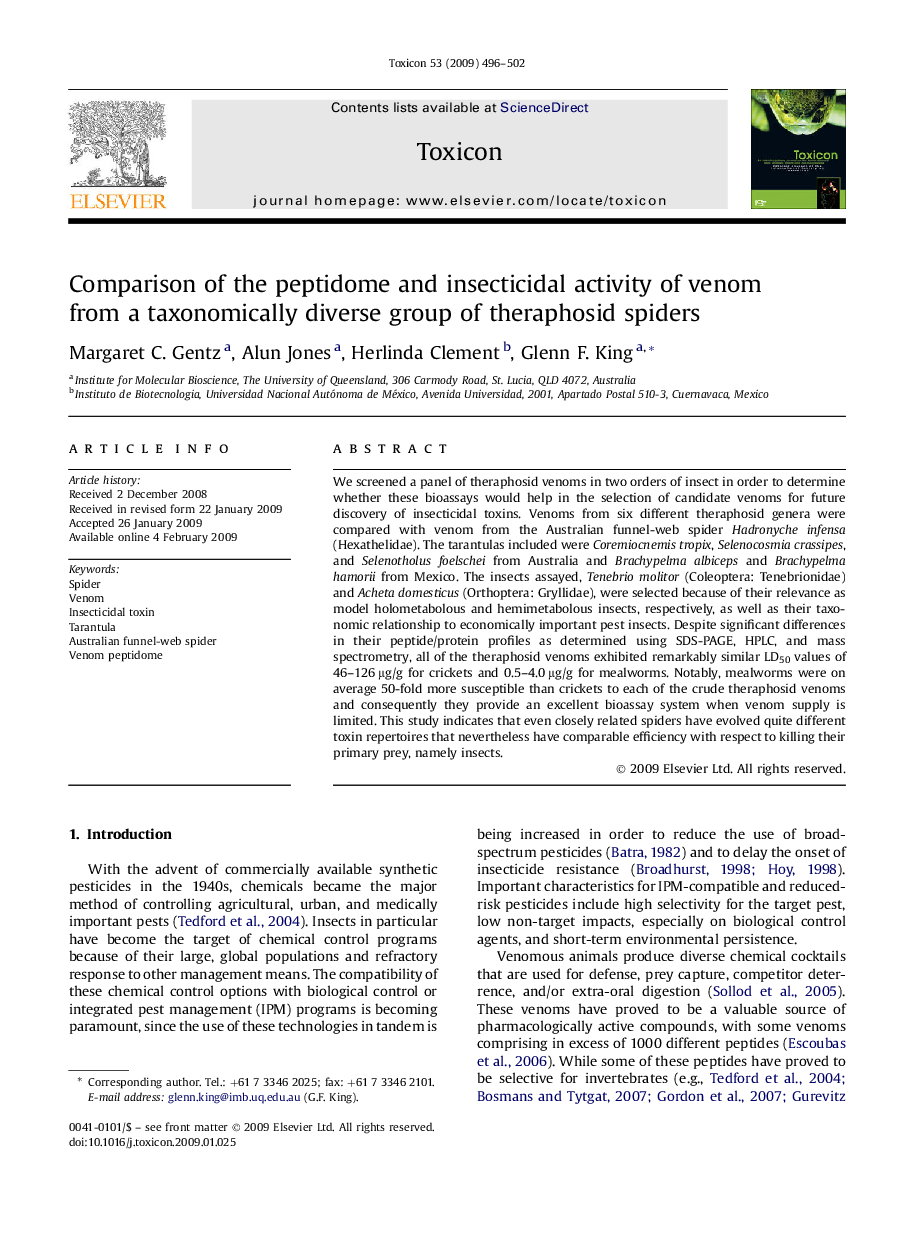| Article ID | Journal | Published Year | Pages | File Type |
|---|---|---|---|---|
| 2065936 | Toxicon | 2009 | 7 Pages |
We screened a panel of theraphosid venoms in two orders of insect in order to determine whether these bioassays would help in the selection of candidate venoms for future discovery of insecticidal toxins. Venoms from six different theraphosid genera were compared with venom from the Australian funnel-web spider Hadronyche infensa (Hexathelidae). The tarantulas included were Coremiocnemis tropix, Selenocosmia crassipes, and Selenotholus foelschei from Australia and Brachypelma albiceps and Brachypelma hamorii from Mexico. The insects assayed, Tenebrio molitor (Coleoptera: Tenebrionidae) and Acheta domesticus (Orthoptera: Gryllidae), were selected because of their relevance as model holometabolous and hemimetabolous insects, respectively, as well as their taxonomic relationship to economically important pest insects. Despite significant differences in their peptide/protein profiles as determined using SDS-PAGE, HPLC, and mass spectrometry, all of the theraphosid venoms exhibited remarkably similar LD50 values of 46–126 μg/g for crickets and 0.5–4.0 μg/g for mealworms. Notably, mealworms were on average 50-fold more susceptible than crickets to each of the crude theraphosid venoms and consequently they provide an excellent bioassay system when venom supply is limited. This study indicates that even closely related spiders have evolved quite different toxin repertoires that nevertheless have comparable efficiency with respect to killing their primary prey, namely insects.
